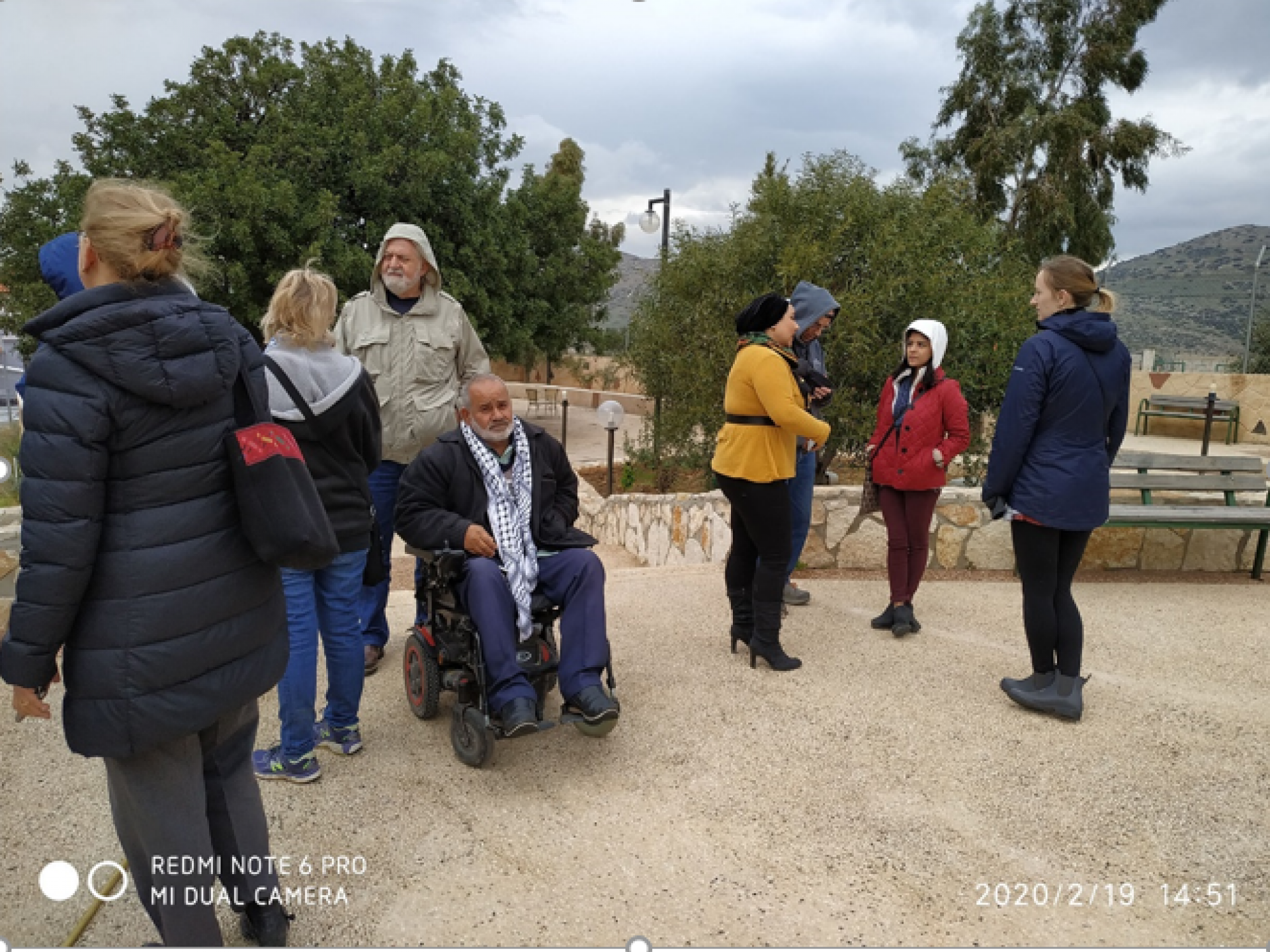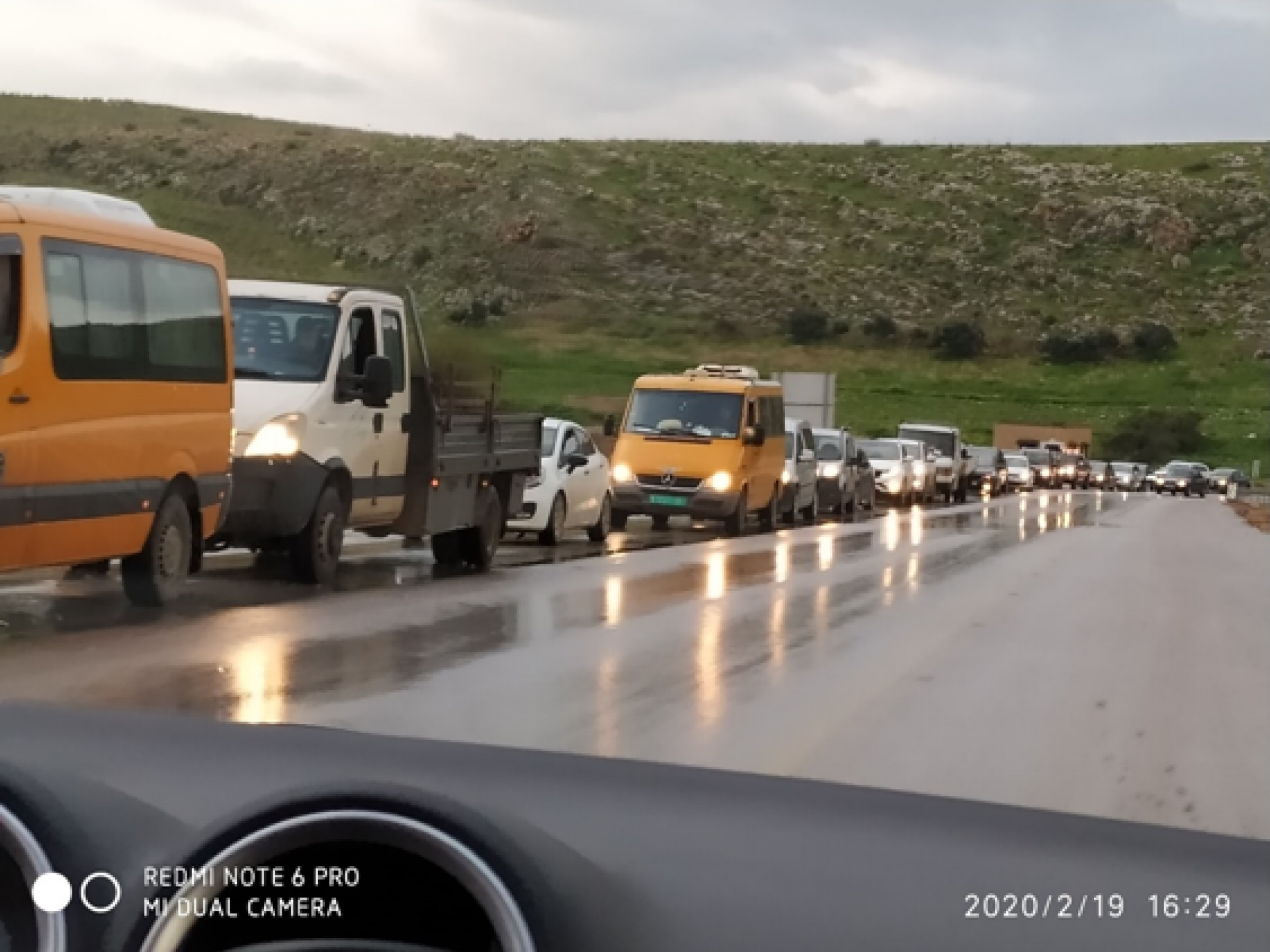Touring the northern Palestinian Jordan Valley with aides of American Congress members
There were 10 Americans on this tour, among them five Congressional aides, a journalist, a Palestinian-American attorney now living in Ramallah, and the tour organizer – an American woman active in fund raising for Palestinians and promoting projects for Palestinian communities, especially in the Palestinian Jordan Valley.
The participants came from Jerusalem to visit the lovely, neat village of Aqaba, located on the hills west of Tyassir Checkpoint.
Haj Sami, head of the village council, hosted them, spoke about problems with the Israeli army. The village is situated inside Area C, in an area defined by the occupation authorities as a firing zone, where live fire practice is often held nearby.
Sami said that the village’s young people leave for nearby villages inside Area A (under Palestinian control) especially for want of residential space. Entering the village, we were impressed with the number of new buildings under construction. They will be inhabited by young residents who had left and might return. Haj Sami, as head of the village, issues construction permits but there are also attempts to obtain permits from the occupation authorities’ Civil Administration. Several planning applications and proposed master plans have already been turned in. It is highly unlikely that they will be approved.
From Aqaba we continued northward. The tour, led by Daphne, focused on the problem of the illegal settler-colonist outposts and the water issue.
We went up to Shirat Ha-Asabim outpost opposite Mekhola settler-colony, and close to the older outpost of Giv’at Sal’it. We stopped at a spot from which the outpost structures are clearly seen, and their accelerated development. Infrastructures appear improved, including new roads. From afar, we also saw a large farming structure. Two settler-colonists were busy laying roof planks.
From the outpost one can clearly see approaching vehicles and tell them apart: military vehicles, cars belonging to settler-colonist friends from nearby outposts, or unwanted tourist vehicles. As our minibus was still trying to turn around, a vehicle came towards us, speeding out of the outpost. We left before the army got there, as it usually does when the settler-colonists summon it.
The local water problem can be most concretely illuminated by a visit to Bardala, a Palestinian village – one look at the ruined pumps which the villagers have been forbidden to repair, compared to the large, new pumps belonging to the Israeli water company Mekorot, stuck in the heart of the village, in Area B.
In Bardala we took leave of the tour and returned to Tel Aviv.
On our way, at Hamra Checkpoint, there was a long line of 30 cars, each awaiting its turn to receive the soldiers' “signal” to cross the checkpoint.



